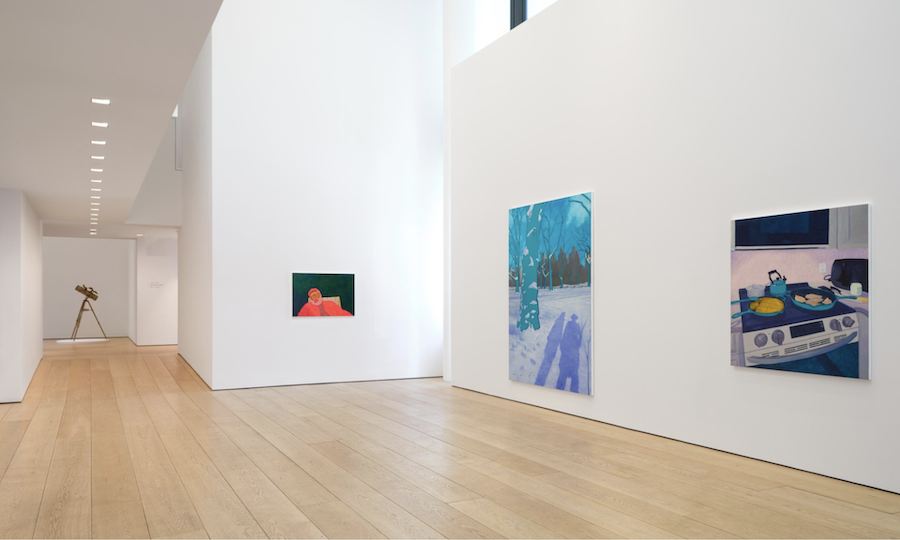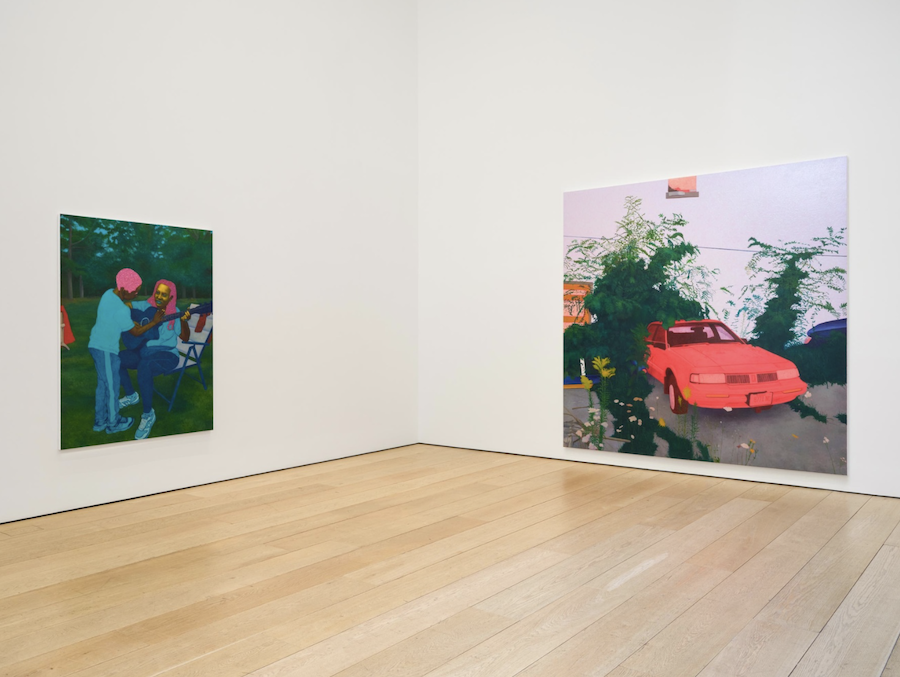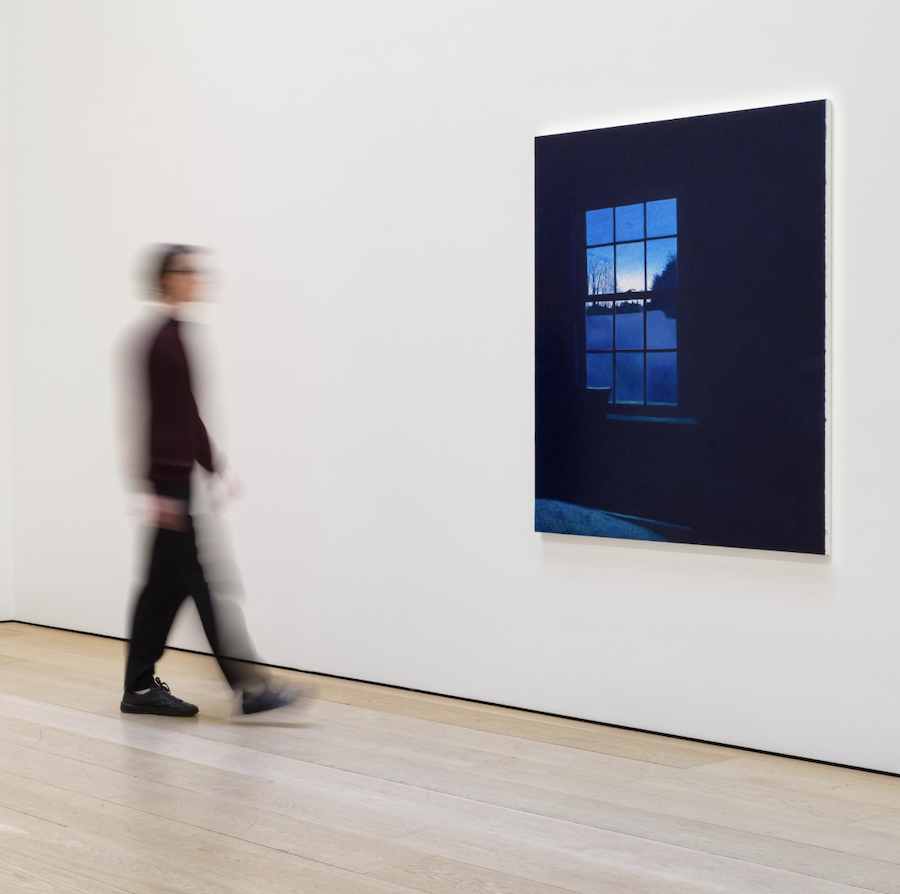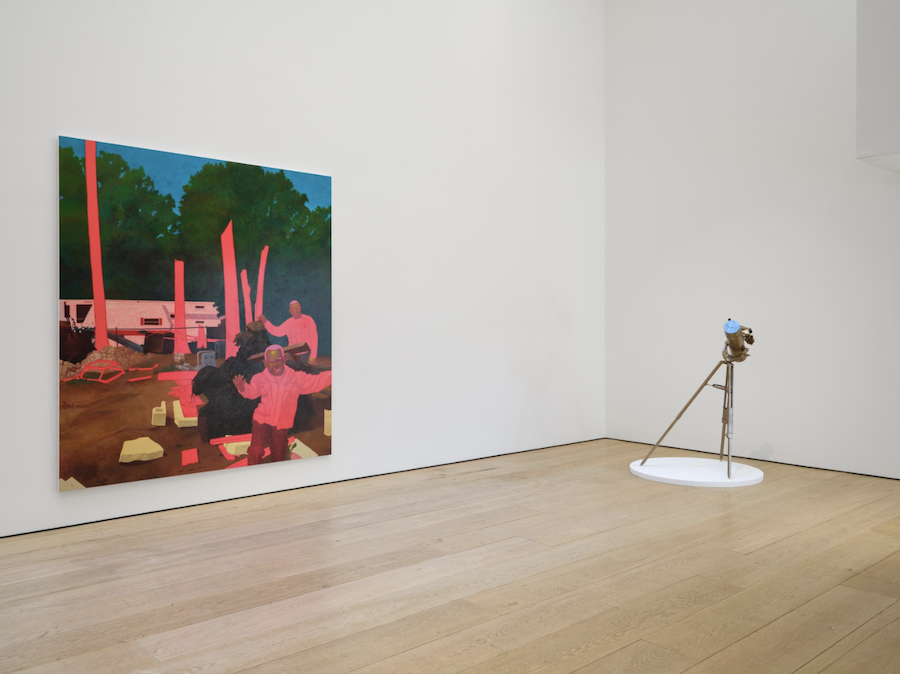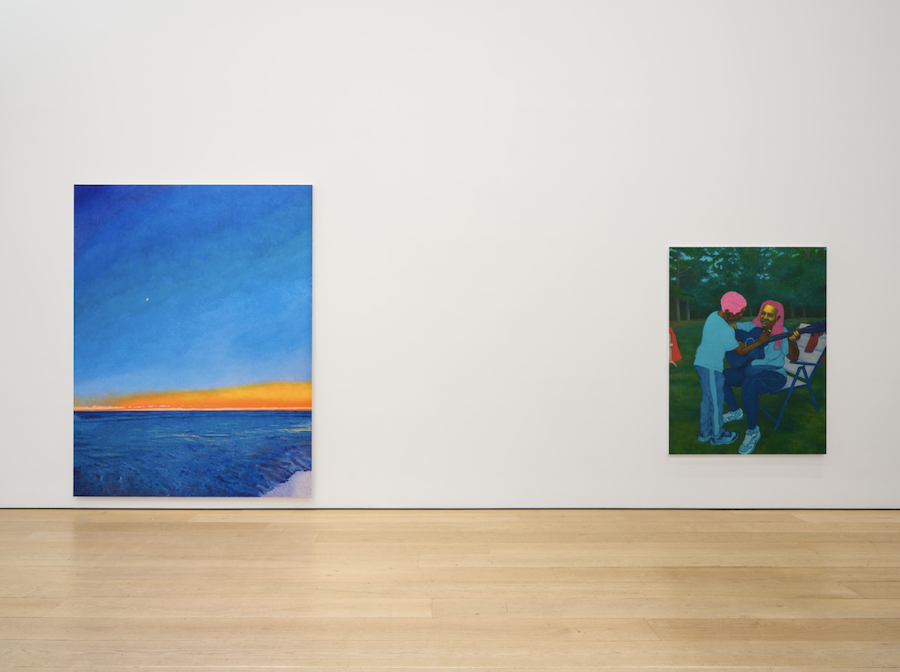Lehmann Maupin presents The City Lights Can't Shine Quite Like the Stars: Got So Far From My Raising I Forgot Where I Come From, an exhibition of new work by New York-based artist Arcmanoro Niles. Including some of his largest canvases to-date, the exhibition marks the artist’s second major solo exhibition in New York and constitutes a turning point for the artist. Known for his colorful paintings that capture the daily, yet intimate moments of contemporary life through figuration and portraiture, Niles’ new works embrace landscape, depicting the artist’s own inner world through a series of immersive, place-based compositions.
In this exhibition, Niles meditates on personal loss through an exploration of landscape, drawing inspiration from the colorwork of both contemporary painters like Kerry James Marshall and Richard Mayhew and Old Masters like Caravaggio. In these new works, rendered in vibrant, technicolor hues that construct a signature kind of chiaroscuro, Niles finds himself immersed in nature—in the trees of a remote field, near the shore of the sea, bathed in crisp light peeking through bare trees on a sunny winter’s day. “I paint what I know,” states the artist. In this body of work, Niles confronts our personal and collective lived experience during the years following the Covid-19 pandemic, at once emotionally nuanced and overwhelming. Through 11 paintings and a single sculpture—the first of its kind in his oeuvre—viewers encounter intimate spaces and memories.
As a child, Niles had a penchant for taking apart household items and turning them into toys; for Niles, pieces of a telephone affixed to an empty deodorant bottle became a tool for time travel. Praying to a God That Won’t Talk Back (2023), his very first sculpture, viscerally recalls these childlike creations and sense of wonderment. Inspired by Yayoi Kusama’s famous infinity mirror rooms, Niles’ telescope reminds us of the wonder and innocence of childhood and the magic of imagination. Peek into it and you’ll see a kaleidoscope of stars, stretching indefinitely into the abyss beyond. Similarly, Niles’ paintings crystallize memory, freezing moments in time through vibrant layers of oil paint, acrylic, and glitter. In Where Can I Go Where I Won’t End up Lost Again (2023), the tight crop of a bedroom window is seen from a dark interior; outside, bare branches pierce the winter sky, a cool glow seeping into the room.
When approaching Niles' paintings, the mind begins to wander, reaching for distant memories and recalling sights and sounds of the past. His compositions evoke a certain ambiguity, at once recognizable and foreign. Domestic scenes are eerily familiar, gesturing towards our own subconscious psyches. In Niles’ new paintings, forgotten memory and inner truth unfold through a scenery rendered in brilliant, pulsing color. The setting sun illuminates a tranquil shore as a wave crashes against the edge of a canvas and a sliver of the moon shines overhead; blooming flowers allude to the changing of seasons, reminding us that time is a continuum and change is inevitable. Depicting light and shadow through an exploration of color, Niles illustrates quiet moments and spaces of reflection—the loss of a friend, a fight with a lover, the birth of a baby, the death of a grandparent. The depiction of such moments, rendered at the intersection of formal tradition and imaginative experimentation, becomes an investigation of humankind’s connection to nature, place, and the nuances of memory.
The exhibition’s titular painting, Got So Far from My Raising I Forgot Where I Come From (Spent My Youth among the Pines) (2023), depicts Niles with his father, encapsulating the myriad of feelings and memories Niles associates with each composition. We see a young Niles laughing at the viewer, his palm outstretched and his father standing behind him, a light pink trailer home and pine trees in the background. The painting references Niles’ desire to return to nature while alluding to his intimate and familial relationships. Here and across the exhibition, Niles finds solace in connecting with others through the universal language of art marking, seeking to harness its capacity for catharsis and transformation. He finds solace in the mundane and everyday, “painting what he knows” to seek meaning and preserve memory.




